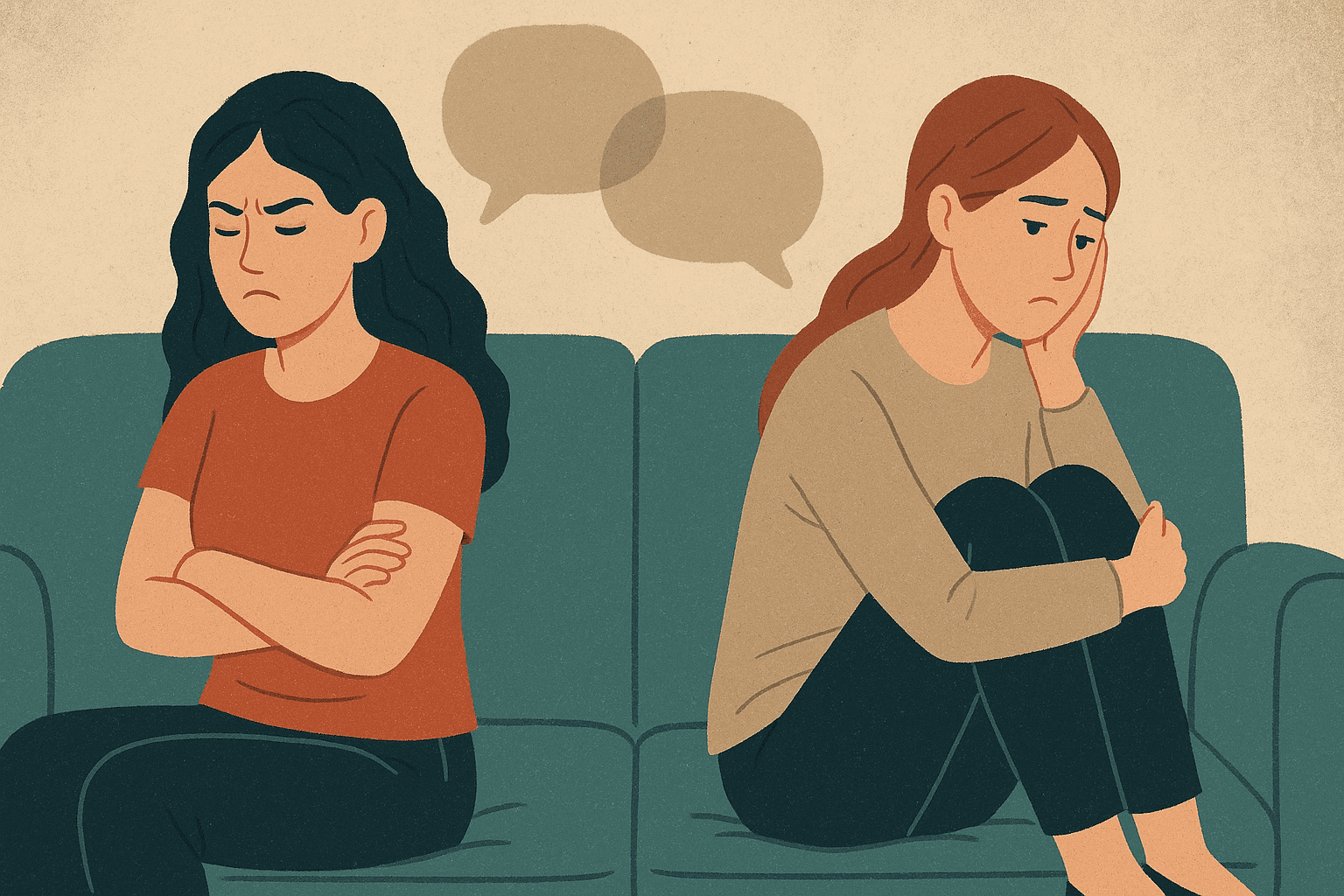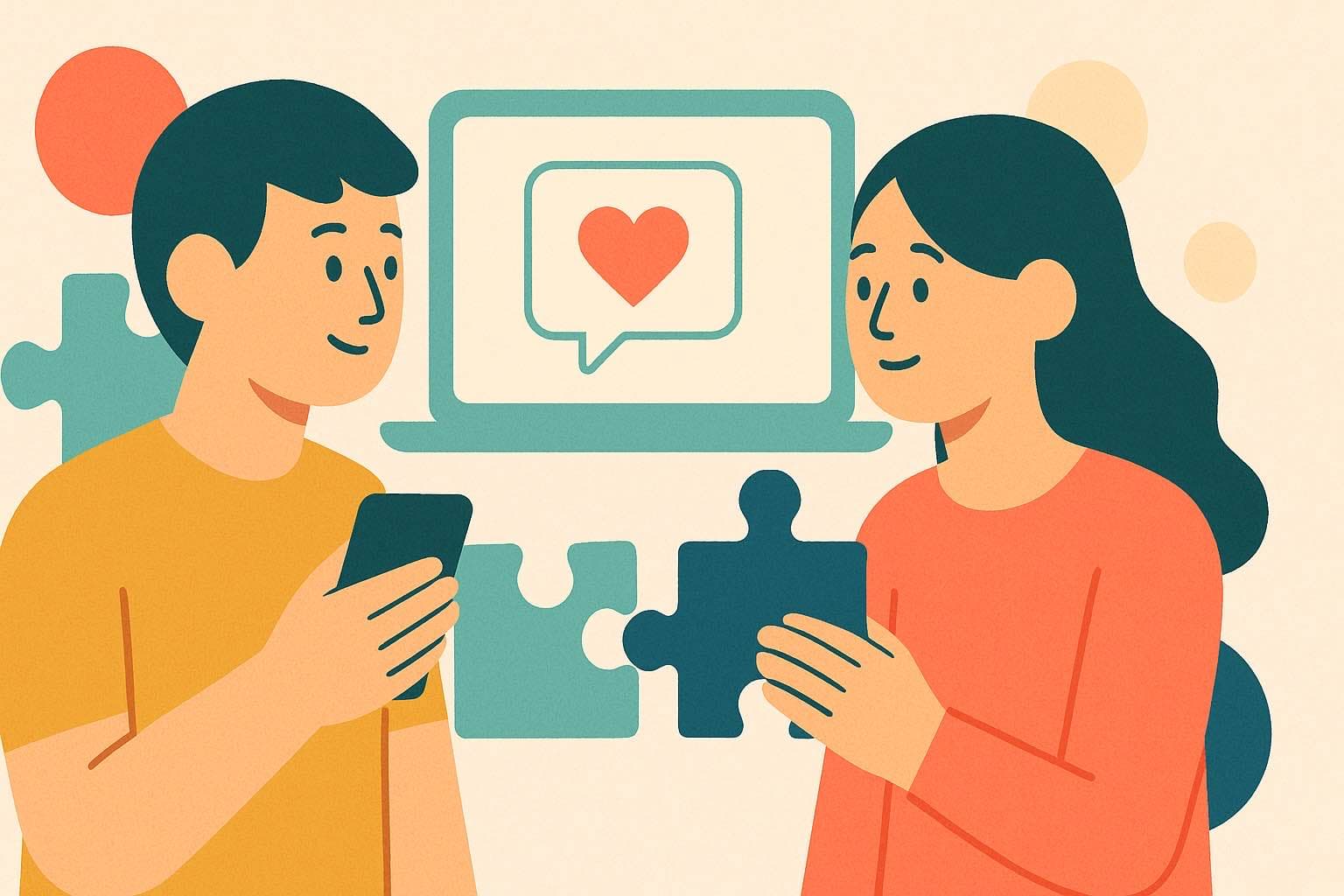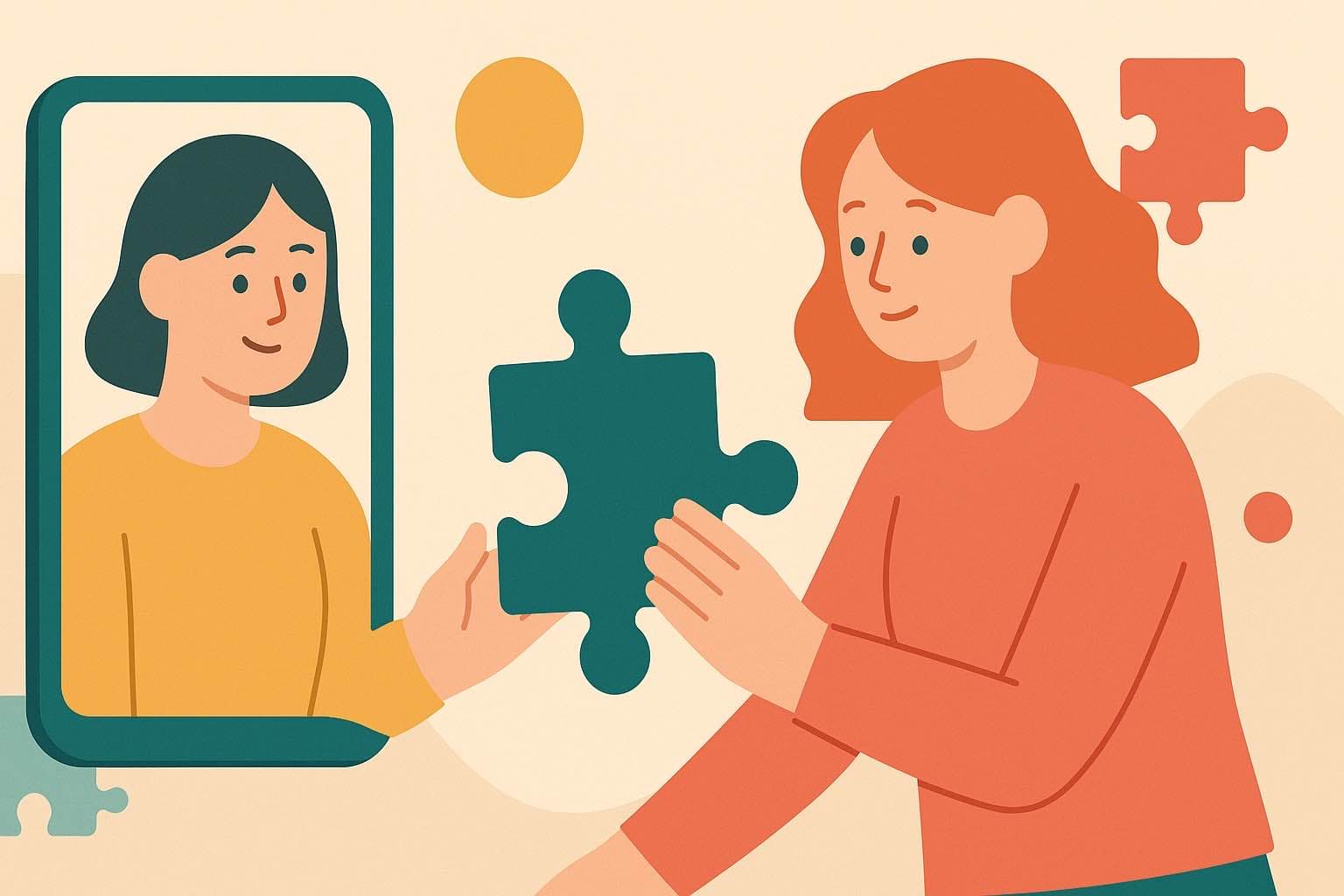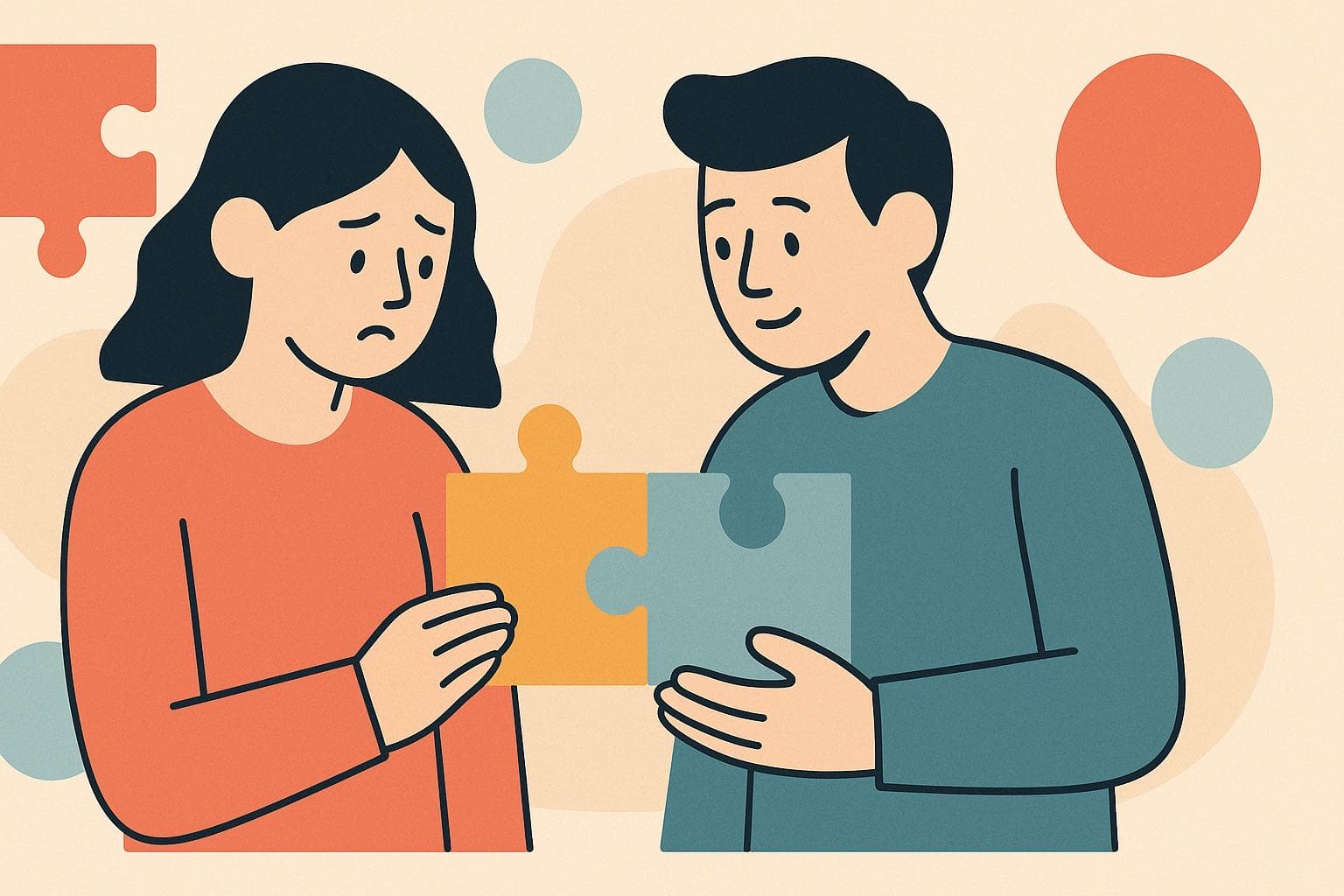Silent Treatment Between Friends: The Hidden Destroyer of Meaningful Relationships
Discover how silent treatment between friends damages relationships, why it happens, and practical strategies to rebuild trust and establish healthier communication patterns.

Have you ever experienced the cold sting of a friend suddenly cutting off all communication? That awkward silence where texts go unanswered, calls aren't returned, and what was once a vibrant friendship feels frozen in time? You're not alone.
The silent treatment between friends affects millions of people worldwide. It's that invisible wall that appears overnight, leaving one person confused, hurt, and desperately seeking answers that never come.
Unlike romantic relationships where silent treatment gets more attention, friendship dynamics often suffer in silence. We're left wondering: "What did I do wrong? Is our friendship over? Should I keep trying or give up?"
This comprehensive guide explores the complex psychology behind silent treatment in friendships. You'll discover why it happens, how to respond effectively, and most importantly, how to rebuild trust when communication resumes.
Understanding the Silent Treatment in Friendships
What Exactly Is Silent Treatment?
The "silent treatment" is when a person refuses to communicate with someone because they are angry or upset. In friendships, this behavior manifests as:
- Complete communication shutdown - no responses to texts, calls, or messages
- Social media silence - no likes, comments, or engagement with your posts
- Exclusion from social events without explanation
- Avoiding places where they might encounter you
- Giving one-word responses or dismissive body language
However, silent treatment differs significantly from healthy timeout periods. Timeouts are breaks from a conversation that allow people to calm down and return to a conversation with a clearer mind, while silent treatment is one-sided and potentially indefinite.
The Friendship Context
In friendship, the Silent Treatment is often the precursor to a "silent" friendship break up. Unlike family relationships where people are often forced to eventually reconcile, friendships are voluntary. This makes them particularly vulnerable to permanent damage from prolonged silence.
Many people underestimate how deeply silent treatment affects platonic relationships. We tend to think friends should just "get over it" or that friendship conflicts are less serious than romantic ones. This misconception prevents proper healing and resolution.
Why Friends Give Each Other the Silent Treatment
Understanding the root causes helps break the destructive cycle. Research reveals several key motivations:
1. Emotional Avoidance
Some people use silence as a defense mechanism. Some individuals use silence as a defence mechanism to escape confrontations or uncomfortable emotions. They might feel overwhelmed by conflict and retreat into silence rather than face difficult conversations.
2. Fear of Vulnerability
In the past, I would not want my friends to know how much I needed them or how it hurt me when I was not included. Many people fear showing emotional vulnerability, so they withdraw rather than express hurt feelings directly.
3. Attention-Seeking Behavior
Sometimes we use silence to get a hold of our friend's attention. When friends feel neglected or taken for granted, they might use silence to force the other person to notice and pursue them.
4. Manipulation and Control
More concerning is when silence becomes a tool for manipulation. By cutting off contact without giving any reason for their actions, silent treaters create feelings of fear, confusion, guilt, and anxiety in the minds of their targets.
5. Poor Communication Skills
Not everyone is good at putting their thoughts and emotions into words. When they feel upset, they may not know how to explain what's bothering them, so they just stay quiet.
6. Learned Behavior Patterns
Engaging in silent treatment as an adult has been found to be associated with experiencing parental silent treatment. People often repeat communication patterns they experienced in childhood.
The Psychological Impact of Silent Treatment Between Friends
The effects of silent treatment extend far beyond temporary hurt feelings. Scientific research reveals alarming psychological consequences:
Physical Pain Response
Research shows that our sympathetic nervous system reacts when we think that a social bond is under threat. Our dorsal anterior cingulate cortex — the region of our brain responsible for processing pain — lights up.
Your brain literally processes silent treatment as physical pain. The same neural pathways activate whether you're experiencing a broken bone or a broken friendship.
Emotional Devastation
Research has found that people who received the silent treatment experienced a threat to their needs of belonging, self-esteem, control, and meaningful existence.
Common emotional responses include:
- Anxiety and stress about the relationship's status
- Self-doubt and questioning personal worth
- Confusion about what went wrong
- Isolation and loneliness
- Anger and resentment toward the silent friend
Long-Term Relationship Damage
Over time, the use of the silent treatment may mean people do not resolve deeper issues in their relationship. Unresolved conflicts create emotional scar tissue that weakens the friendship foundation.
Recognizing When Silent Treatment Becomes Emotional Abuse
Not all silence is abusive, but it's crucial to recognize warning signs. The silent treatment can be a form of abuse when it includes:
Intentional Harm
- Deliberate punishment for perceived wrongs
- Seeking alliances from mutual friends against you
- Manipulating behavior through emotional withdrawal
- Gaslighting tactics that make you question reality
Pattern Recognition
Abusive silent treatment typically shows these patterns:
- Repeated cycles of silence without resolution
- Escalating duration - silent periods get longer
- Conditional communication - talking only when demands are met
- Power imbalances where one friend controls all interactions
Impact Assessment
Ask yourself:
- Does this silence feel punitive?
- Am I walking on eggshells to avoid triggering silence?
- Has this become a recurring pattern?
- Do I feel manipulated or controlled?
If you answered "yes" to multiple questions, you might be experiencing emotional abuse disguised as friendship conflict.
How to Respond When a Friend Gives You the Silent Treatment
Responding effectively requires strategy and emotional intelligence. Here are evidence-based approaches:
1. Stay Calm and Centered
Keeping your composure helps you respond thoughtfully rather than react emotionally, making it easier to communicate clearly and confidently.
Practical steps:
- Take deep breaths before responding
- Avoid reactive texting or calling repeatedly
- Practice self-soothing techniques
- Remember their silence reflects their issues, not your worth
2. Give Appropriate Space
Give them time without hounding them as to why they didn't get back to you. Sometimes people need processing time, especially if they're dealing with personal challenges.
However, balance space with check-ins:
- Send one non-demanding message acknowledging the silence
- Express your care without pressuring for immediate response
- Set internal timeline for your own emotional protection
3. Don't Take It Personally
Ask yourself, "Is this about me, or is something to do with them that they need to resolve?" Most likely the latter.
Remember:
- Their communication style reflects their emotional state
- Past experiences shape how people handle conflict
- Your worth isn't determined by their response patterns
4. Address the Silence Directly
When appropriate, acknowledge the elephant in the room:
- "I notice we haven't been talking. Is everything okay?"
- "I care about our friendship and feel confused by the silence."
- "If I did something to upset you, I'd like to understand."
5. Set Your Own Boundaries
Setting healthy boundaries in relationships is important to determine when silence and space go too far.
Establish limits:
- How long you'll wait for response
- What behavior you'll tolerate
- When you'll step back for self-protection
- Clear consequences for continued silence
Breaking the Cycle: Communication Strategies
Effective communication can resurrect even severely damaged friendships. Here's how:
The Soft Startup Approach
"Hey Mom and Dad, I don't feel good about how our conversation ended at dinner last week, can we meet up to talk about how it made me feel?"
Framework for friends:
- Acknowledge the situation without blame
- Express your feelings using "I" statements
- Request dialogue rather than demanding explanations
- Show willingness to understand their perspective
Active Listening Techniques
If you want to maintain a friendship, it's important to listen to what they have to say.
Practice:
- Reflect their emotions - "It sounds like you felt hurt when..."
- Ask clarifying questions - "Help me understand your perspective..."
- Avoid defensive responses - focus on understanding first
- Validate their experience even if you disagree
Taking Responsibility
If there was an incident that set the silent treatment off because of something YOU did to hurt the other person, you may want to apologize first.
Effective apologies include:
- Specific acknowledgment of your actions
- Recognition of impact on them
- Genuine remorse
- Commitment to behavior change
Finding Common Ground
- Emphasize shared friendship history
- Highlight positive memories together
- Express mutual desire for resolution
- Focus on future relationship goals
Rebuilding Trust After Silent Treatment
Rebuilding trust in a friendship after being given the silent treatment by making sure that you talk about it. Trust repair requires intentional effort from both parties.
Honest Conversation About the Silence
Your friend might want to pretend that nothing happened, but that's unlikely to fix anything.
Important discussion points:
- What triggered the silent period
- How it affected both of you
- What each person needs going forward
- Agreements about future conflict resolution
Establishing New Communication Norms
Create explicit agreements about:
- Response timeframes for messages
- Conflict resolution processes before resorting to silence
- Check-in frequency during difficult periods
- Safe words or phrases to request space without cutting off completely
Gradual Re-engagement
- Start with low-stakes interactions
- Build positive experiences together
- Acknowledge progress and setbacks
- Celebrate small victories in communication
Professional Support
Consider friendship counseling or individual therapy if:
- Patterns keep repeating despite good intentions
- Deep-seated trust issues persist
- Communication attempts consistently fail
- Either person feels emotionally unsafe
Setting Healthy Boundaries in Friendships
Setting healthy boundaries in relationships is important to determine when silence and space go too far. Boundaries prevent future silent treatment episodes.
Types of Friendship Boundaries
Communication Boundaries:
- Response time expectations
- Preferred communication methods
- Topics that are off-limits
- Frequency of contact
Emotional Boundaries:
- Limits on emotional labor you can provide
- Reciprocity expectations in support
- Personal information sharing levels
- Conflict resolution preferences
Social Boundaries:
- Group dynamics and mutual friends
- Social media interaction expectations
- Event inclusion assumptions
- Privacy levels in public settings
How to Communicate Boundaries
You need to be explicit in your demands when setting healthy friendship boundaries. Don't be vague.
Examples of clear boundary communication:
- "I need you to be a better listener and not talk over me during conversations"
- "When you don't respond for days, I feel anxious. Can we agree on response timeframes?"
- "I'm not comfortable being the only person you vent to about relationship problems"
Enforcing Boundaries Kindly
After expressing your boundaries and appreciation for your friendship, introduce the consequences if someone goes against the boundary that you have set.
Gentle enforcement strategies:
- Remind them of previously stated boundaries
- Explain natural consequences calmly
- Maintain consistency in your responses
- Offer alternative solutions when possible
When to Walk Away from a Toxic Friendship
Sometimes the healthiest choice is ending the friendship. If your friend really didn't mean to hurt you and just needed space, try suggesting ways that they can let you know - but if they refuse to engage in healthy communication, it may be time to move on.
Red Flags for Ending the Friendship
- Repeated silent treatment cycles without resolution
- Refusal to acknowledge their harmful behavior
- Escalating manipulation tactics beyond just silence
- Complete unwillingness to communicate or compromise
- Impact on your mental health becomes severe
How to End a Friendship Gracefully
The Gradual Fade:
- Slowly reduce contact frequency
- Become less available for hangouts
- Stop initiating conversations
- Allow natural distance to grow
The Direct Conversation:
- Express your decision calmly and kindly
- Explain your reasons without attacking them
- Wish them well in their future
- Set clear expectations about future contact
The Clean Break:
- Stop all communication immediately
- Block on social media if necessary
- Remove shared connections where possible
- Focus energy on healthier relationships
Self-Care During Friendship Endings
- Grieve the loss - it's a real relationship ending
- Seek support from other friends or professionals
- Practice self-compassion about the failed friendship
- Learn lessons for future relationships
Prevention: Building Healthier Communication Patterns
The best defense against silent treatment is establishing robust communication from the beginning.
Early Friendship Communication
Set expectations early:
- Discuss conflict resolution preferences
- Share communication styles and needs
- Establish mutual respect agreements
- Create safe spaces for difficult conversations
Regular Friendship Maintenance
- Schedule regular check-ins about the friendship health
- Address small issues before they become big problems
- Practice vulnerable communication in low-stakes situations
- Celebrate positive interactions and growth together
Conflict Prevention Strategies
Before problems arise:
- Learn each other's trigger points
- Understand stress responses and coping mechanisms
- Develop shared language for difficult emotions
- Create protocols for when someone needs space
During emerging conflicts:
- Address issues promptly rather than letting them fester
- Use "I" statements to express concerns
- Listen with curiosity rather than defensiveness
- Focus on problem-solving rather than blame
Real-Life Examples and Case Studies
Case Study 1: The Misunderstood Exclusion
Sarah discovered through social media that her best friend Emma had thrown a dinner party without inviting her. A friend forgets to include me in a dinner party she is throwing. I found out that I am excluded. I decide this intentional. I become offended.
Instead of asking Emma directly, Sarah stopped responding to texts and calls. The silence lasted three months before Emma reached out directly, explaining it was an oversight during a stressful week. Their conversation revealed Sarah's deeper insecurity about being valued in the friendship.
Resolution strategies that worked:
- Emma initiated the difficult conversation
- Sarah expressed her underlying fears honestly
- They established new inclusion communication norms
- Both friends practiced more direct communication going forward
Case Study 2: The Attention-Seeking Silence
Mark felt neglected when his friend Jake got busy with a new relationship. Perhaps she has been preoccupied with her new job or boyfriend. She doesn't text back as fast as she used too.
Rather than expressing his feelings directly, Mark began giving Jake the silent treatment. When Jake noticed and reached out, Mark initially continued the silence to "teach him a lesson."
What finally worked:
- Jake persisted with gentle check-ins without pressure
- Mark eventually recognized his own manipulation
- They discussed how life changes affect friendships
- They created realistic expectations for contact frequency
Case Study 3: The Abusive Pattern
Lisa repeatedly used silent treatment to control her friend group. Whenever someone disagreed with her or made plans without her, she would cut off communication entirely and encourage others to do the same.
Recognition and resolution:
- The friend group recognized the abusive pattern
- They set collective boundaries about acceptable behavior
- Lisa was given opportunities to change her communication style
- When she refused, the group chose to distance themselves for their mental health
Frequently Asked Questions
How long should I wait before reaching out to a friend giving me silent treatment?
There's no universal timeline, but consider these factors: the severity of any conflict, your friend's typical communication patterns, and your own emotional needs. Generally, waiting 3-7 days shows respect for their space while one gentle check-in message after that demonstrates care without pressure.
Is it ever okay to give a friend the silent treatment?
Silent treatment as punishment or manipulation is never healthy. However, taking time to process emotions before communicating can be beneficial. The key difference is communication - let your friend know you need space to think rather than simply disappearing.
What's the difference between needing space and giving silent treatment?
Healthy space includes communication about the need for time, a general timeframe for reconnection, and reassurance about the relationship's value. Silent treatment involves no communication, indefinite duration, and often punitive intent.
How do I know if my friend's silence is temporary or permanent?
Look for patterns in their past behavior, the severity of any triggering incident, and their response to gentle outreach attempts. If they consistently refuse all communication for weeks or months without explanation, it may indicate a permanent change.
Should I apologize even if I don't know what I did wrong?
Avoid generic apologies without understanding the issue. Instead, express your willingness to listen and understand their perspective. Say something like: "I care about our friendship and want to understand if I did something that hurt you."
Can a friendship survive repeated silent treatment episodes?
Yes, but only with recognition of the pattern, commitment to change from the person giving silent treatment, and establishment of healthier communication norms. Professional support may be necessary for deep-seated patterns.
Conclusion
Silent treatment between friends represents one of the most painful yet common relationship challenges we face. It activates our deepest fears about belonging and acceptance while leaving us powerless to fix the situation through our own actions.
Understanding the psychology behind silent treatment helps us respond with wisdom rather than desperation. Sometimes silence indicates a friend processing difficult emotions and needing time. Other times, it reveals manipulative patterns that threaten our mental health.
The key lies in recognizing the difference and responding appropriately. Healthy friendships require mutual respect, clear communication, and willingness to work through conflicts together. When these elements are missing, it may be time to invest our emotional energy elsewhere.
Remember: You deserve friendships that enhance your life rather than causing constant anxiety. While every relationship faces challenges, chronic silent treatment indicates deeper issues that may not be within your power to fix.
Focus on building and maintaining relationships with people who value direct communication, emotional honesty, and mutual respect. These friendships will sustain you through life's challenges and bring joy rather than confusion to your daily experience.
Your worth isn't determined by someone else's inability to communicate effectively. Sometimes the greatest act of self-love is walking away from relationships that consistently cause pain and investing instead in those that promote growth, understanding, and genuine connection.
Ready to transform your friendships? Start by implementing one communication strategy from this guide today. Even better, use peachi.app to fix a friendship. Small steps toward healthier patterns can create profound changes in your relationship satisfaction and overall well-being.
Related Articles

Digital Tools for Friendship Restoration for Teens and College Students: 7 Apps That Actually Work
Discover 7 powerful digital tools that help teens and college students repair broken friendships. From AI coaches to structured conversations, learn how to fix friendships fast.

Digital Tools for Friendship Restoration: How to Blend Online and Offline Repair
Discover proven digital tools and strategies to restore damaged friendships. Learn how to combine online platforms with offline actions for meaningful reconciliation.

Conflict with a Friend? Here's the Step-by-Step Fix
Learn how to fix a friendship after conflict with proven communication strategies, emotional repair techniques, and actionable steps to rebuild trust.

How to Survive a Friend Breakup When You Share the Same Friend Group (Without Losing Your Mind)
Friend breakups hurt worse when you share the same social circle. Learn proven strategies to heal, set boundaries, and navigate awkward group dynamics without losing yourself.